Key takeaways
- Cinematography significantly enhances the emotional experience of a film by conveying feelings through visual storytelling, beyond what dialogue can express.
- “Killers of the Flower Moon” employs muted colors, natural lighting, and deliberate camera movements to create an immersive and haunting atmosphere reflective of its historical narrative.
- The film’s visual storytelling effectively evokes empathy and connection to characters, showcasing the power of silence and stillness in amplifying emotional depth.
- Compared to other films, the cinematography in “Killers of the Flower Moon” emphasizes subtlety and restraint, inviting viewers to engage more deeply with the story rather than relying on flashy visuals.
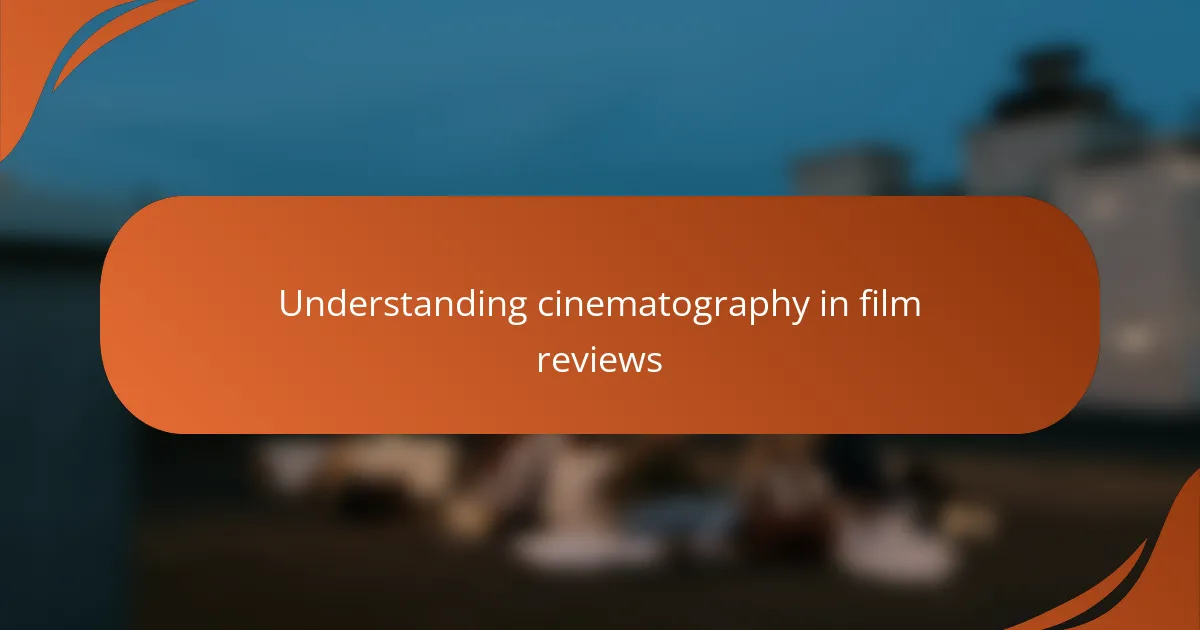
Understanding Cinematography in Film Reviews
When I first began writing film reviews, I underestimated how much cinematography shapes my experience of a movie. It’s not just about pretty pictures; it’s the language of light, shadow, and camera movement that conveys emotions beyond dialogue. Have you ever noticed how a lingering shot or a sudden cut made you feel unsettled or deeply connected to a character? That’s cinematography at work.
Thinking about cinematography reminds me of moments when a film’s visuals stayed with me long after the credits rolled. It’s like catching the director’s personal lens, their way of seeing the world. In reviews, I try to capture that feeling and describe how the visual storytelling affected me. Isn’t it fascinating how a single frame can carry so much meaning?
Understanding cinematography means paying attention to these visual cues and translating them into words that readers can almost see themselves. It’s a skill I’ve honed by watching films repeatedly and reflecting on how the camera’s choices influence the story’s mood and pacing. How often do we really stop to appreciate these subtle yet powerful elements in film?
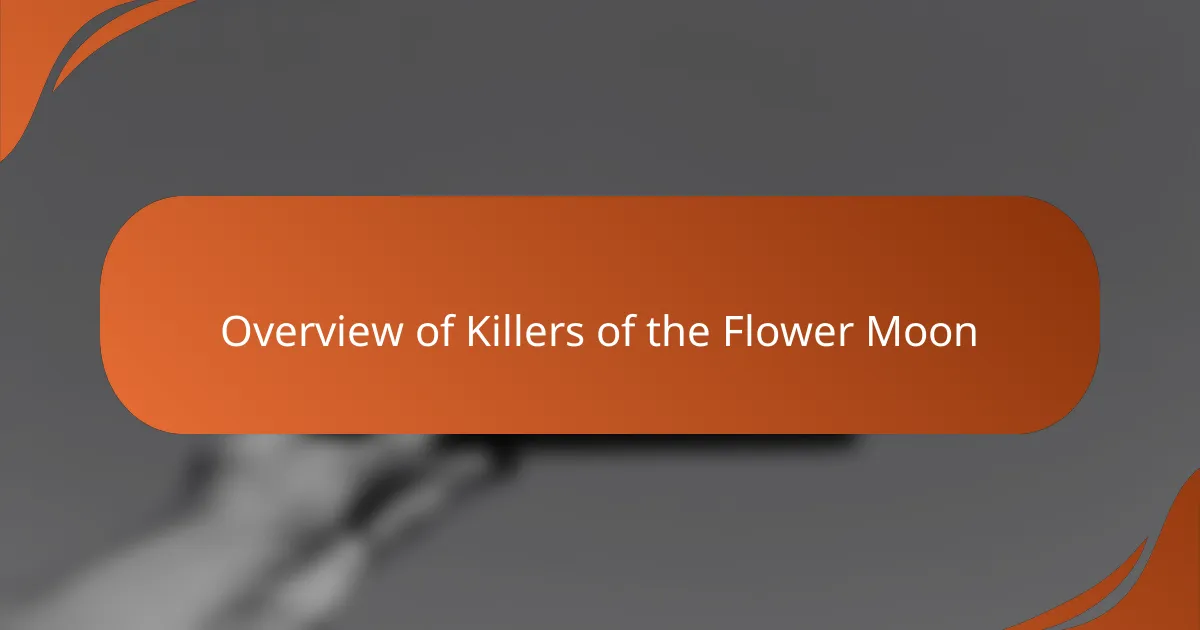
Overview of Killers of the Flower Moon
Killers of the Flower Moon unravels a haunting true story set in 1920s Oklahoma, focusing on the Osage Nation murders following the discovery of oil on their land. The narrative weaves together themes of greed, injustice, and cultural tragedy, grounding its chilling events in a raw, historical reality. Have you ever felt a film’s setting so deeply that it almost becomes a character itself? That’s the kind of immersive world this story creates.
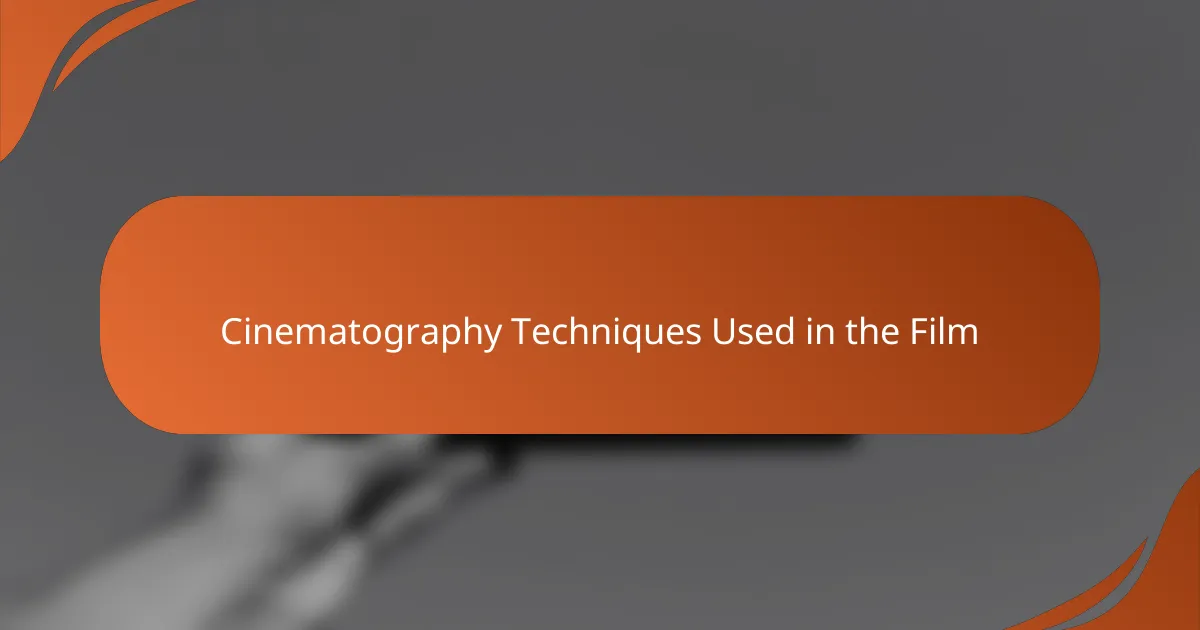
Cinematography Techniques Used in the Film
The cinematography in Killers of the Flower Moon uses a muted color palette that immediately drew me into the somber and tense atmosphere of the 1920s Oklahoma setting. I found how the filmmakers balanced sweeping wide shots of the vast plains with intimate close-ups to be particularly powerful—these choices made the landscape feel both expansive and suffocating, mirroring the characters’ isolation and vulnerability.
One technique that stood out was the use of natural lighting, which gave many scenes a raw, almost documentary-like authenticity. Have you ever noticed how sunlight filtering through trees or casting long shadows can make a moment feel eerily real? That’s exactly what happened to me, enhancing the film’s emotional weight without the need for flashy effects.
The camera movement also intrigued me. Slow, deliberate tracking shots created a sense of inevitability, like the story was moving toward an unavoidable tragedy. At times, the subtle handheld shots added a layer of intimacy and unease, pulling me closer to the characters’ turmoil. It’s fascinating how these techniques work silently yet so effectively to shape our emotional response.
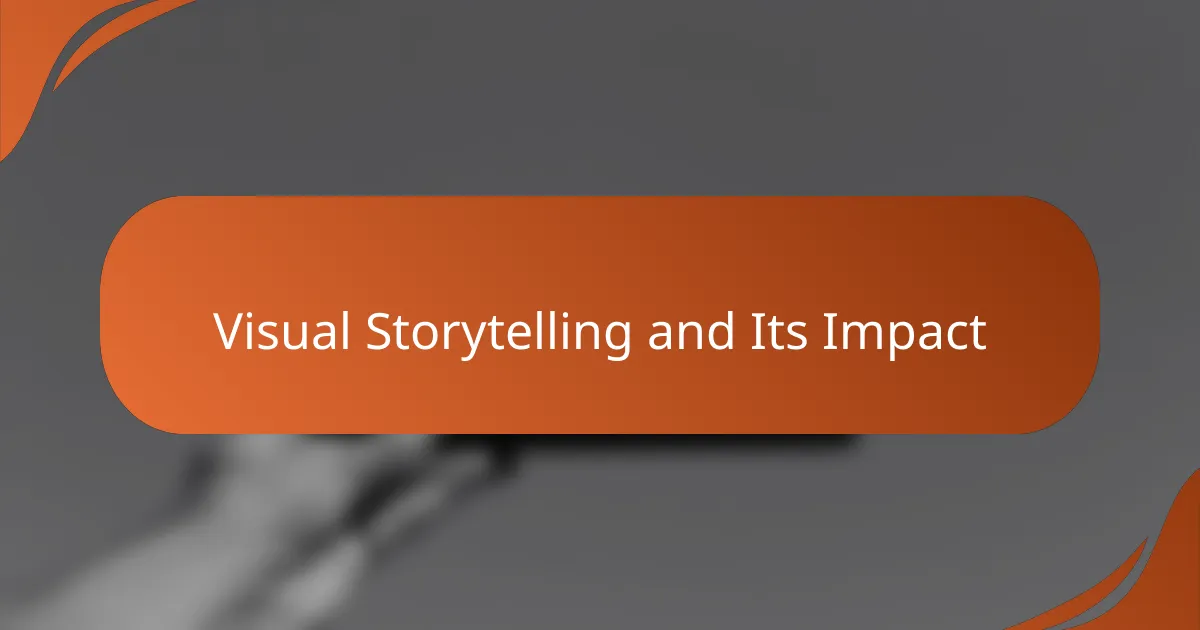
Visual Storytelling and Its Impact
Visual storytelling in Killers of the Flower Moon felt almost like a language of its own—each frame seemed carefully crafted to speak volumes without a single word. I remember a scene where the heavy silence and the lingering shot on an empty field made me pause and reflect on the weight of loss that lingers beneath the surface. Have you ever experienced a moment in a film where silence and stillness are more telling than dialogue?
The impact of this visual approach went beyond just setting the mood; it shaped how I connected with the story’s emotional core. Watching the subtle shifts in lighting and composition, I felt drawn into the characters’ struggles, as if the camera itself was guiding me through their pain and resilience. It’s incredible how visual cues can invite viewers to feel empathy so deeply, isn’t it?
What struck me most was how the film leveraged visual storytelling not just to depict history but to immerse the viewer in it, making the past feel immediate and urgent. Have you ever left a movie theater still seeing its images in your mind, the visuals haunting you in a way that pure narrative couldn’t achieve alone? That, to me, is the true power of cinematography’s impact.
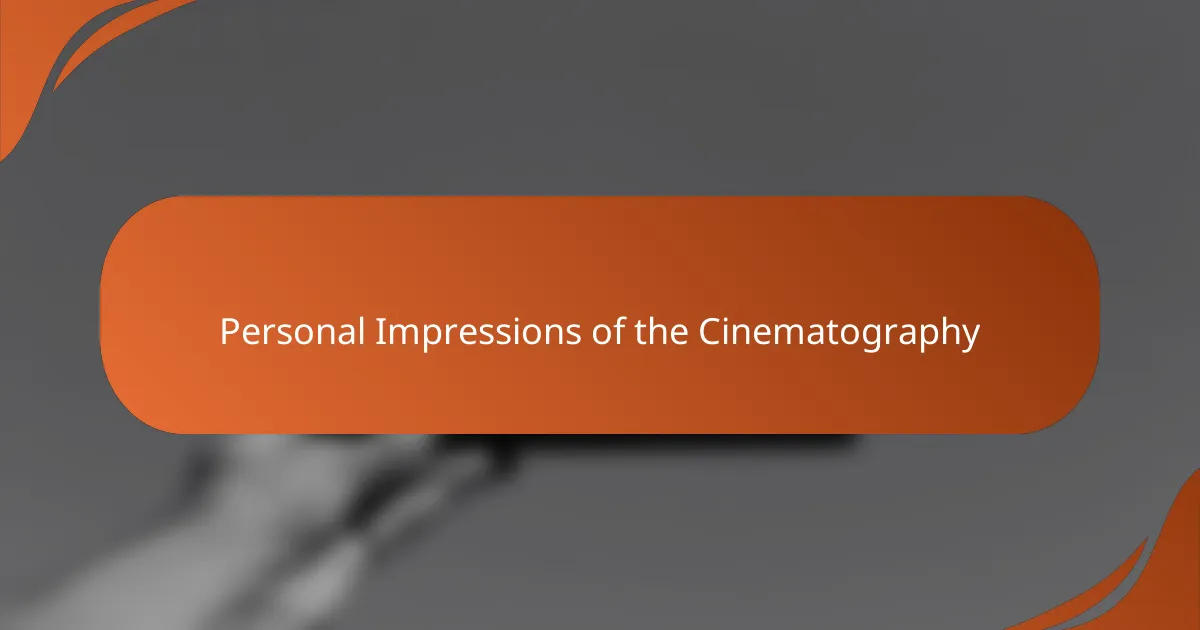
Personal Impressions of the Cinematography
The cinematography of Killers of the Flower Moon lingered with me long after watching. The way each frame seemed to breathe with quiet intensity made me feel like I was peering into a fragile moment frozen in time. Have you ever had a film make you sense the weight of history just through its visuals? That’s exactly the resonance I experienced here.
One scene in particular stayed with me—a slow, lingering shot of the desolate plains under a gray sky. It wasn’t just beautiful photography; it felt like a silent witness to the tragedy unfolding beneath. I remember feeling a mix of sorrow and awe, as if the land itself was mourning alongside the people. That emotional depth struck me in a way few films manage.
I also appreciated how the subtle camera movements mirrored the characters’ internal struggles. The quiet tracking shots pulled me in, making me almost hold my breath in tense moments. Sometimes, I caught myself consciously leaning forward, fully absorbed, wondering how such nuanced cinematography could communicate so much without a single word.
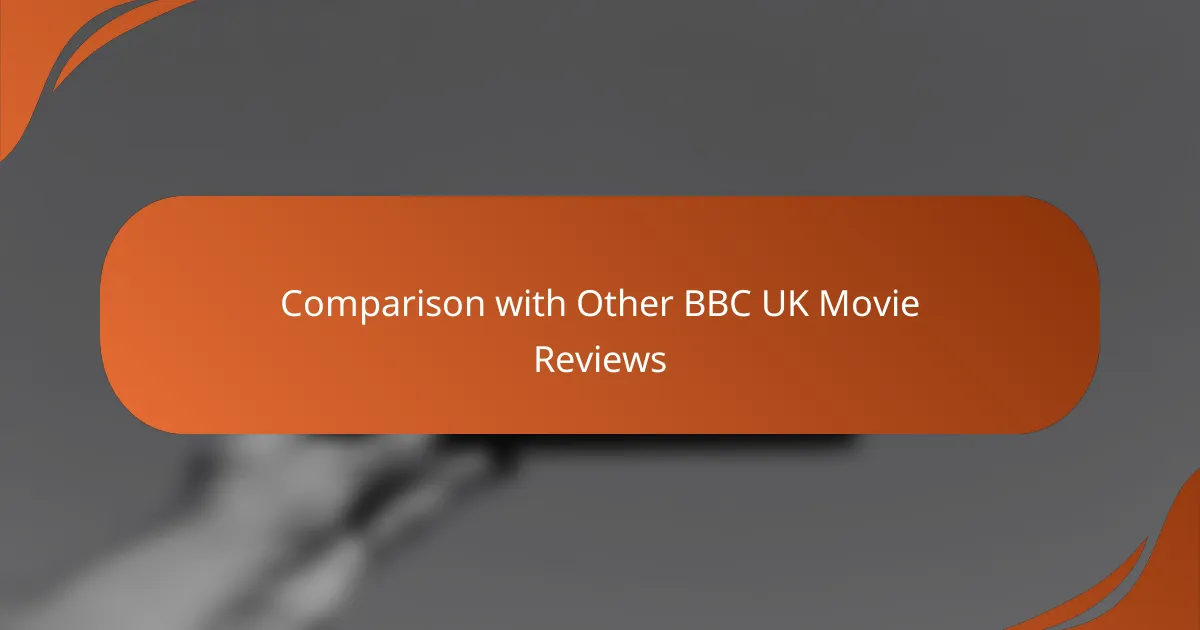
Comparison with Other BBC UK Movie Reviews
When I compare my review of Killers of the Flower Moon’s cinematography to other BBC UK movie reviews, I notice how this film’s visual language stands out for its subtlety and restraint. Many reviews I’ve read often highlight flashy camera work or vibrant palettes, but here, the quiet power of muted tones and slow, deliberate pacing really impressed me.
In other BBC reviews, the focus frequently leans toward how cinematography enhances spectacle or action, but Killers of the Flower Moon takes a different path—using the camera almost like a silent narrator. That choice made me reflect on how diverse cinematographic styles can be and how a film’s mood can be shaped by what’s left unsaid in the visuals. Isn’t it fascinating how varied the storytelling tools are across films?
From my experience reading these reviews, I’ve realized that while many movies rely on visual bombast to grab attention, Killers of the Flower Moon’s cinematography opts for immersive subtlety instead. It challenges us to pause and feel, rather than just watch, which I think is a rare and powerful achievement that other BBC UK movie reviews have only occasionally captured.